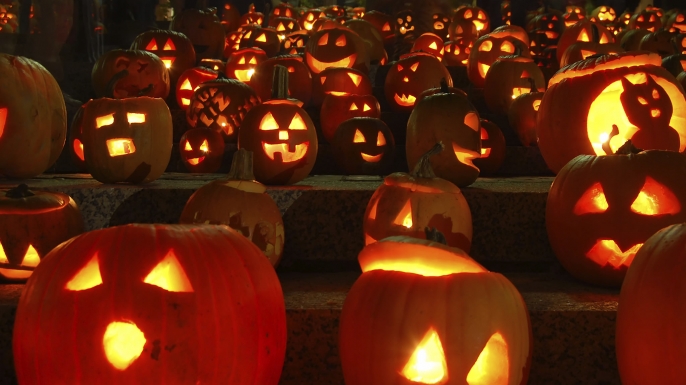What is Halloween?
November 14, 2017
The muffled patter of feet echoed through the cool October night. Hidden behind their masks, they move quickly with their minds set on one thing. Once they reach their last barrier, they voiced their wants by saying, “Trick-or-Treat!”
Just a few days ago, Americans across the country carved pumpkins and dressed up in costumes to celebrate the second largest holiday in America. Halloween has always seemed to have a large impact, but little is fully understood about its true origins. Where did Halloween come from? How did it get to us?
2,000 years ago, the ancient Celts dressed as spirits and angels and gathered around bonfires to celebrate Samhain, (soh-win) a festival for the ending of the harvest. For them, October 31st wasn’t just a fall get-together before the New Year, but rather it had a special meaning for them. They believed that the dead would return from the grave, but not in a pleasant way.
The spirits of the dead were believed to wreak havoc on the Celtic lands. Crops growing in present day Ireland, the United Kingdom, and Northern France didn’t stand a chance. Shivering with fear, people dressed up as the mischievous beings to protect themselves.
Then, in 43 A.D. the romans conquered Celtic territory. During the four hundred years of their ruling, the Roman Empire’s autumn traditions merged with those of Samhain. Regina Hansen, a College of General Studies master lecturer in rhetoric and an expert in the supernatural and how it’s portrayed in literature and film states that bobbing for apples in honor of the Roman goddess Pomona was one of these traditions.
Things took a slight turn after Pope Boniface IV created All Martyrs Day on May 13, 609 A.D. Years later, Pope Gregory III expanded the holiday to saints too. Then in 1000 A.D., All Saints Day was officially established on November 2.
All Saints Day played the biggest part in some of the more popular Halloween traditions. Dressing up as the spirits made a huge comeback, as well as “going a-souling” which is more commonly known as trick-or-treating.
One question still remains unanswered: How did Halloween get to the states?
Most sources, such as those of History.com and Live Science, agree that Irish immigrants escaping the potato famine brought Halloween with them in their luggage. The Natives soon hopped on the metaphorical train and along with Maryland, popularized Halloween (previously known as: All Hallows’ Eve).
Contrary to popular belief, Halloween wasn’t considered a national holiday until the 1920’s. In the 1930’s however, Halloween evolved once again. It became less about telling horror stories and adrenaline rushes from dangerous pranks. Little by little it became more of a children’s holiday.
Soon, people can up with ways to commercialize Halloween, making it the second largest holiday; according to a survey by the National Retail Federation, an average $9.1 billion dollars are spent in preparations in America alone.
Halloween’s history might be confusing, but it plays a large part in our lives today.



